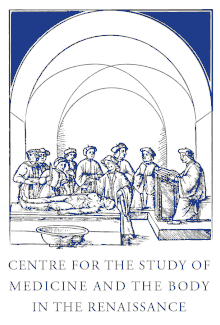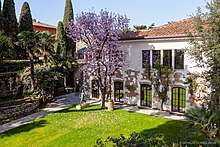Centre for the Study of Medicine and the Body in the Renaissance
The Centre for the Study of Medicine and the Body in the Renaissance (CSMBR) is an international institute of advanced studies belonging to the Institutio Santoriana – Fondazione Comel and based at the Domus Comeliana in Pisa.[1] It is the major Italian institution devoted to the study of medical humanities, and its mission is to further the values of medical humanism and the advancement of scientific knowledge as particularly related to the historical and intellectual development of the European Medical Renaissance (1400–1700).

History
The CSMBR was established in January 2018 after the endowment of the Institutio Santoriana – Fondazione Comel to carry on the scientific legacy of the Italian physician, scientist, inventor and philosopher Santorio Santorio (1561-1636), who introduced the quantitative method to medicine and is reputed the father of quantitative experimental physiology,[2][3][4] pursuant to the will of Prof. Marcello Comel (1902–1996)[5][6][7] founder of the institution.
Organisation

The CSMBR is run by a committee of scholars[8] that works in cooperation with three formal affiliates, the Centre for Medical History (CMH), University of Exeter, the Centre for the History of Medicine of the University of Padua, and the Studio Firmano for the History of Medicine and Science. As an independent Institute of Research, the CSMBR pursues exclusively scientific and cultural goals, is open to scholars of any nationality, neither seeks nor promotes any political goals or engages in advocacy research.
Location

The premises of the CSMBR are in the Domus Comeliana, former private residence of Marcello Comel, located next to the Leaning Tower in Piazza dei Miracoli.
Prizes and awards
The Centre encourages international cooperation by its awards and travel grants, such as the Santorio Award for Excellence in Research[9] and the Santorio Fellowship for Medical Humanities and Science.[10]
References
- Amiri, Peyman. "The Kiln, the Alembic, and the Clockwork: Inside the CSMBR Summer School | Premodern Healthscaping". Retrieved 2019-09-29.
- Eknoyan, G. (1999). "Santorio Sanctorius (1561-1636) - founding father of metabolic balance studies". American Journal of Nephrology. 19 (2): 226–233. doi:10.1159/000013455. ISSN 0250-8095. PMID 10213823.
- Bigotti, Fabrizio (February 2017). "A Previously Unknown Path to Corpuscularism in the Seventeenth Century: Santorio's Marginalia to the Commentaria in Primam Fen Primi Libri Canonis Avicennae (1625)". Ambix. 64 (1): 29–42. doi:10.1080/00026980.2017.1287550. ISSN 1745-8234. PMC 5470109. PMID 28350287.
- Bigotti, Fabrizio; Taylor, David (2017). "The Pulsilogium of Santorio: New Light on Technology and Measurement in Early Modern Medicine". Societate Si Politica. 11 (2): 53–113. ISSN 2067-7812. PMC 6407692. PMID 30854144.
- "The founder". Fondazione Comel. Retrieved 2019-06-03.
- "SIUSA | Archivi di personalità - Comèl (Comel) Marcello". siusa.archivi.beniculturali.it. Retrieved 2019-06-03.
- Comèl, Marcello (1981). L'uomo nel suo ambiente: fisiologia ambientale, ecofisiologia e fisiecologia (in Italian). Domus.
- "Scientific Committee". CSMBR - Fondazione Comel (in Italian). Retrieved 2019-06-04.
- "Santorio Award | History of Science Society". Retrieved 2019-06-04.
- "SANTORIO FELLOWSHIP FOR MEDICAL HUMANITIES AND SCIENCE 2018 | Conecta". SANTORIO FELLOWSHIP FOR MEDICAL HUMANITIES AND SCIENCE 2018 | Conecta. 2018-04-13. Retrieved 2019-06-04.